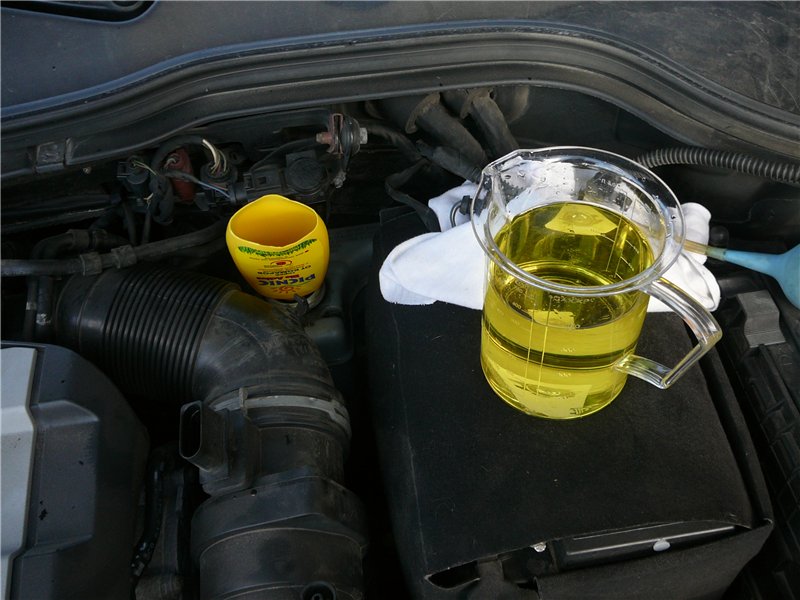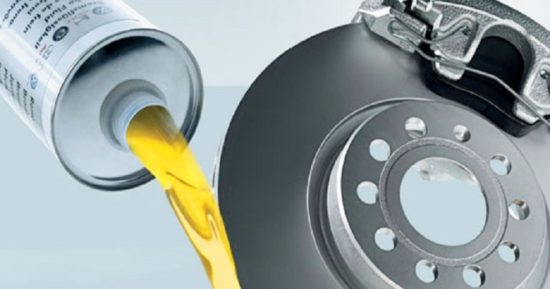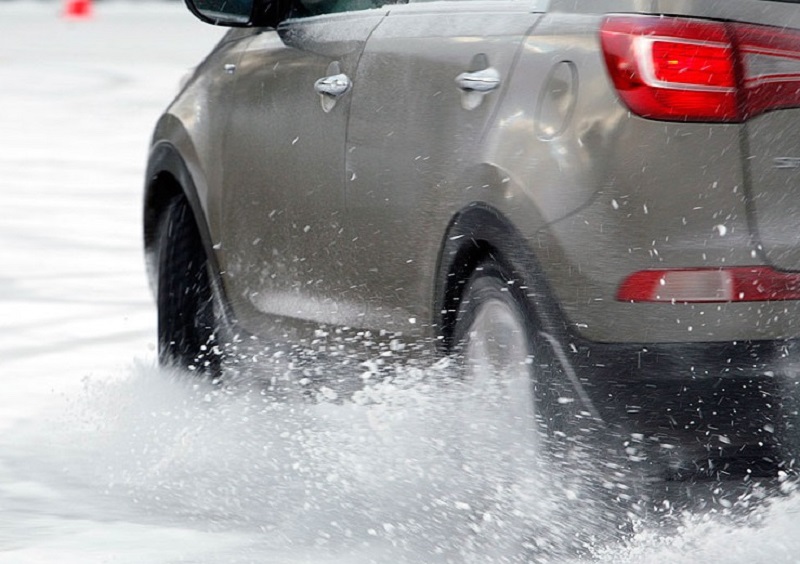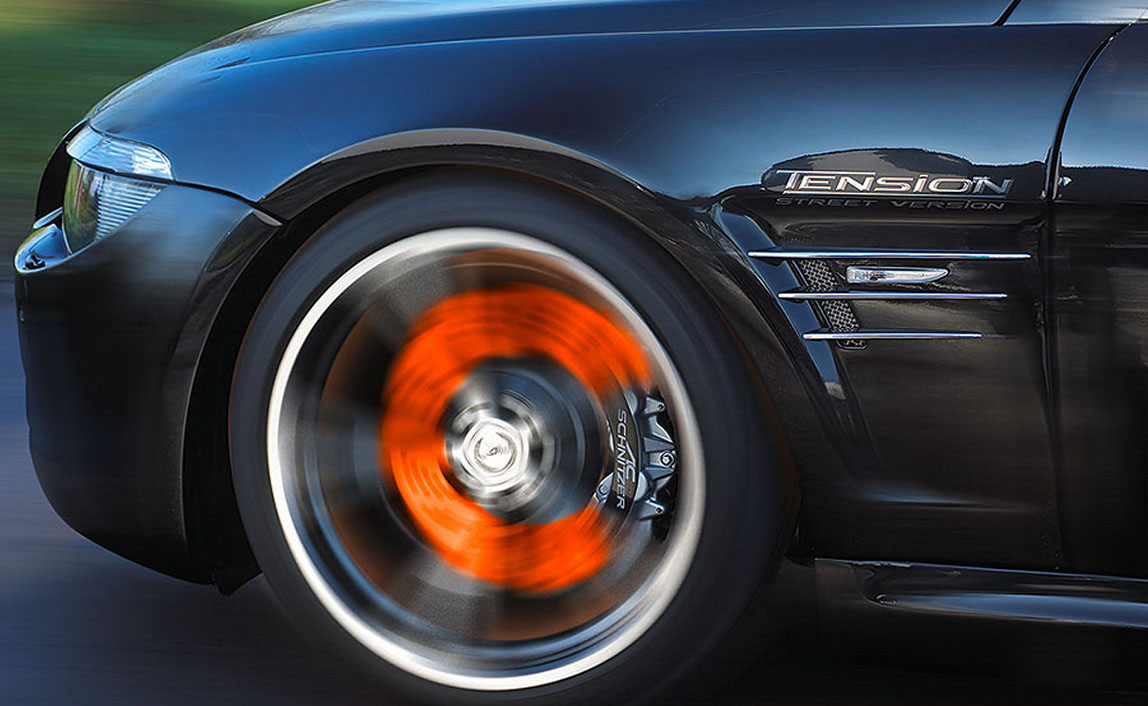The maintenance of the brake system is the security guard of the driver and the passengers in the cabin. When you click on the brake pedal, the TJ in pipelines presses on brake cylinders, which slow down the car due to the friction force. During braking, heat is highlighted. And if the brake fluid heats up too much, it can boil, as a result of which steam plugs will appear. The brake pedal fails, as the liquid will become compressible, and the brake system will not be effective. Therefore, the replacement of the TZ is an important point in the maintenance of the car.
Content
Buy brake fluid what
To date, there are a number of requirements for TZH. First, the boiling point of the DJ should fully comply with the value declared by the manufacturer. At the same time, it must maintain the work properties at temperatures that are close to the boiling point and at very low negative temperatures. For example, even at a temperature - 40 degrees Celsius are not allowed precipitation and deposits in the brake fluid. It should also resist oxidation and resolving.
In addition, the TH should meet a number of other important requirements. The main thing is the lack of a negative effect on the rubber elements. Also, all components of rubber should not swell, give shrinkage, lose strength and elasticity during operation.
In addition to rubber elements, many parts made from different metals are used in the brake system. Often these elements are interconnected, and this entails the formation of electrochemical corrosion. The DM should serve as a so-called corrosion inhibitor, for which special substances protect aluminum, copper and brass products are added to its composition. The brake system has enough elements that require lubrication. And this task also performs the TJ. It is she who affects the degree of wear of pistons, clarity seals and brake cylinders.
choose brake fluid correctly
As practice is evidenced, the specifics of the brake fluids such that not each brand may be suitable for the braking system of one or another vehicle. Before using existing TG for their cars, car manufacturers take into account all the quality and operational parameters of the brake fluid and the vehicle braking elements.
Therefore, first of all, it is necessary to focus on the TC operating manual, where the manufacturer indicates the standard TJ, which is most optimally suitable for the brake system of your car model.
In addition, when choosing a DJ, it is necessary to pay attention to the temperature of its boiling, as well as the temperature range in which your vehicle is operated, and which is listed on the label. If you have a used machine, then to prevent the destruction of RTI with new liquids, it is desirable to apply alcoholistore brake fluids.
Buy only the standard that is specified in the TC passport, and buy brake fluid only from official dealers, and not in the car market. In addition to digital indicators, when buying, you must also pay attention to the quality of the package. It is worth noting that under the plastic lid, a foil seal must be in obligatory.
how many brake fluid
As a rule, a small amount of TZh is poured into the brake system. Clarify how much the TJ is required to replace in the instructions for a specific car. For complete replacement, approximately 1-1.5 liters of brake fluid will be required.
Brake system car
The brake system of the car can be divided into two parts: the braking actuator and the braking mechanism. Due to the braking mechanism, a braking point appears, as a result of which the velocity of the vehicle changes, or it stops at all. Often, frictional mechanisms are installed on cars that work due to the strength of friction. The working system is placed directly in the wheel when the manual brake mechanism can be located both behind the transfer box and the gearbox.
The design of the friction part in the brake mechanisms may vary. In addition, the brakes are divided into drum and disk. The design of the disk mechanism includes: caliper, one or two brake cylinders, as well as two brake pads and brake disc.
Replacement of brake fluid with your own hands
The procedure for replacing the DVG will be more convenient if you attract one more person to help as an assistant.
tools, consumables, fixtures
To work you will need:
- 1.5 liters of new TZH.
- Empty tank for used TZH.
- Transparent tube, which is suitable for fitting brakes.
- The key is 8.
- Medical syringe.
choosing a workplace
Install the car on the overpack or lift. Much more convenient to change the liquid when the wheels are removed from the car.
how to drain brake fluid
- To begin, it is necessary to find the main brake cylinder in the rotor space.
- Next, you should disconnect the wires going on the TZE level sensor.
- Then unscrew the tank cover.
- After that, we put on a transparent tube on the syringe.
- With this improved syringe, we remove all the old TJ.

- Wipe the tank outside and inside. To do this, make a clean rag on the oblong item, which is suitable in diameter.
flushing brake system
- When the old TA will be removed, pour a new liquid to the MAX mark.

- During the work, it is necessary to constantly top up the brake fluid and ensure that its level does not fall below the MIN mark.
- If the car hangs on the lift, unlock the rear brake regulator. To do this, insert a metal object between the record and the piston. You can use a flat screwdriver.

- On the opposite side of the rear drum, we find the air valve of the rear brakes. Wipe it and clean from dirt.
- Remove the protective cap from the air valve and put the plastic tube on it.
- Old liquid, as a rule, dark, and new - transparent. Therefore, you will immediately see which fluid comes out.
- So that the brake system does not hit the air, immerse the transparent tube into the bottle filled with brake fluid.

- Now it is necessary that the assistant pressed the brake pedal 5 times with an interval of one and a half seconds. After the 5th pressing the pedal must be squeezed to a maximum and hold in such a position.

- Next, unscrew the air valve at half turn. Old TJ will flow from the hose. When the color of the resulting fluid changes from the dirty to transparent, it is necessary to sharply spin the air valve.
- Then ask the assistant to press the brake pedal a couple of times to make sure that the DJ does not proceed through the valve.

- If the leaks are missing, we wipe the air valve and wear a rubber cap on it.
- Take the TH to the maximum level.
pour the brake fluid where
Top the brake fluid is necessary in a special tank, located in the engine compartment, namely in the upper corner of the motor compartment on the driver side. As a rule, it is small, it has a pale color and a black lid.
pumping brake system, together
- Remove the plug closing the pump fitting, and put on the fitting transparent hose.
- Lower the free end of the hose into a partially filled TJ capacity.
- The assistant must click on the brake pedal 3-4 times and leave it pressed.

- Lightly unscrew the groove fitting until the DJ starts out.
- The presence of the exit air can be determined by bubbles.
- Wrap the pumping fitting.
pumping brake system, one
To pump the brake system without an assistant, you will need: the tank cover is identical to your, container and syringe. Here is such a design:
- With the help of sealant, it is necessary to hermetically embed a syringe into the tank cover.
- Next, type in the Syringe and screw this device to the brake tank.
- Unscrew the fitting at the outlet of the contour subject to pumping.
- Install the TZE collecting container that will flow.
- Next the syringe injecting the TZH.
scheme pumping brakes
Starting the brakes should be started from the wheel located at the far distance from GTC: rear right wheeled mechanism, front left wheel mechanism, rear left wheel mechanism, front right wheelchair.
Check brakes
After replacing the TW and pumping the brakes, you need to press the brake pedal several times with different effort and sharpness.
Make sure that the smoothness of pressing on the brake pedal is normal, and the force is evenly distributed along the press.
Tips of professionals
As you can see, the independent replacement of the brake fluid is not a difficult thing, although a little time-consuming. The main thing is to do everything in a strictly defined sequence. Good luck!
Related Materials
- Stove 2110, bad warm stove 2110, VAZ 2110 heating system, repairing the heating system VAZ 2110 with their own hands
- VAZ 2114 stove blows with cold air, stove 2114, bad warm stove VAZ 2114, device and repair of heating VAZ 2114 do-it-yourself, removing the stove VAZ 2114
- How to subdominize the car. How to put a jack. Types of jacks for cars.
- VAZ 2109 Fuse Block, VAZ 2109 Fuse Block Carburetor, VAZ 2109 Fuse Block Injector, Old VAZ 2109 Fuse Block, VAZ 2109 Fuse Block, VAZ Fuse Block 2109
- Car exhaust gas catalyst, faulty catalyst, pluses and cons of the catalyst, how to change the catalyst for the planeencitel
- Stove blowing cold air VAZ 2114, badly blowing the stove VAZ 2114, why badly blowing the stove VAZ 2114
- How to find out the owner of the car by the number of his car, check the car by the number of the traffic police machine, check the car by the state number of the car for free
- How to choose Used tires, Useful Tips
- Winter car road, pressure in passenger car tires in winter, good battery for the car in winter, whether to warm the car in winter
- In winter, the car is poorly started. How to make a car in winter, do you need to warm up the car in winter, useful tips
- Economy fuel consumption machines, the most economical car consumption
- Tires brands for passenger cars, labeling of car tire labeling, residual passenger car tire protector, how to pick a tire on a car brand, car tire tread pattern
- Working transmission operation, mechanical gearbox clutch work, driving with manual gearbox, useful tips
- Rear beam Peugeot 206 sedan, rear beam device Peugeot 206. Rear beam Peugeot 206 Malfunction, repair of the rear beam Peugeot 206
- Diesel fuel in winter, additive for diesel fuel in winter, how to choose the best diesel fuel
- Diesel winter does not start. How to start diesel in winter, heating diesel in winter.
- Japanese bridgestone tires, winter studded bridgestone tires, bridgestone tires brand
- Tire marking decoding for passenger cars, labeling wheels, how to choose the right tires on the disks
- Diesel engine in winter, launch of the diesel engine in winter, what oil to fill in a diesel engine in winter, useful tips
- LED backlight of the car, the backlight of the bottom of the car, the backlight of the legs in the car, the backlight in the door of the car, the backlight of the car is fine
- Recovered tires, bus tire, restored tire protector, can I use them
- Choose winter tires, which is a winter tires, which pressure in winter tires should be marked with winter tires, how to choose the right winter tires, the best winter tires 2019
- Steering rail rail, knock of steering rack, reasons for the knock and repair of the steering rack do it yourself
- Cameless car tires, a set for repair of tubeless tires, repair of the cannon-free tire do it yourself
- Russian tires, Russian tires Winter, Russian All-season tires, Voronezh AMTEL tires, Tires "Matador Omsk Tire", Kama-tires are world-class bus
- How to open a car without a key. Lost the key from the car what to do, the key from the car inside the car
- Silent tires, quiet winter tires, quiet studded bus, which tires to choose, overview tires
- Tires and safety, safety of the bus, why it is necessary to constantly monitor car tires
- Rules of safe driving of the car in the rain and slush, safe driving of the car for beginners
- Rust converter which is better for cars, rust converters to choose how to use rust transducer, professionals
- Polishing the body of the car do it yourself, how to choose a polishing paste, useful tips
- Engine durability, engine life, how to extend engine life
- Knock in the car. Knock when moving a car. What can knock in the car. How to determine the cause of the knock.
- ABS car, what is ABS car, ABS system malfunction, ABS diagnostics
- Overtaking a car when you can start overtaking a car, rules of traffic rules
- Fuel pump VAZ 2110, VAZ 2110 gas station scheme, VAZ 2110 fuel pump device, VAZ 2110 gas station repair,
- Automotive antennas for radio, automotive antenna device, car antenna do it yourself
- Front suspension Kalina, device front suspension Kalina, knock in front suspension Kalina, repair of front suspension Kalina
- Shock absorber Oil, best oil shock absorbers, pumping oil shock absorbers, how to properly pump oil shock absorber
- Clutch malfunctions, touches clutch, causes a clutch malfunction, how to eliminate

























Comments